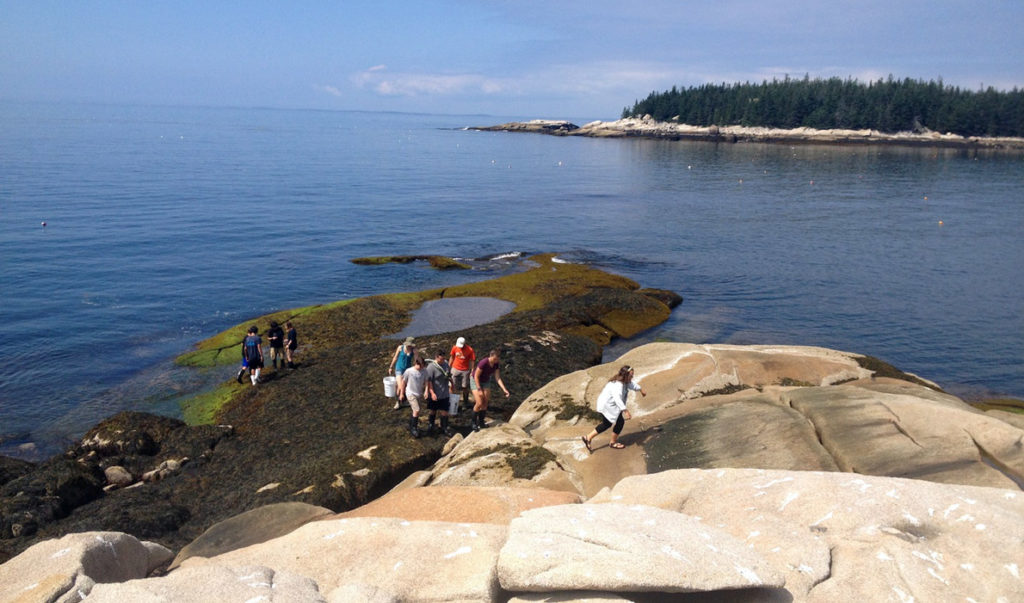Between the end of the school year and the needle drop on summer, I found myself on a very fast boat headed to Hurricane Island. The boat was piloted by a guy I’ve known, through various cosmic-level coincidences, since he was 8-years old, and who’s now the facilities manager for the Hurricane Island Center for Science and Leadership. With me were three coworkers at North Haven Community School, including the principal.
We were headed out for the teacher leadership retreat, held annually for the last few years. We attended last year as well, and were impressed by how much work we actually got done when we cloistered ourselves away in a wooden building with a water view on a different island.
As the boat pulled around the south side of Vinalhaven, the landscape suddenly shifted from jagged edges to pillowy slopes of granite. The total geologic divide between North Haven and Vinalhaven, Greens and Hurricane never cease to surprise and amaze me.
To go to Hurricane is not only to go to a different island but to a different world. While North Haven was producing vegetables and lamb for the Eastern Seaboard, Hurricane was producing granite for monuments and buildings around the world. Several hundred people lived there, quarrying and carving, shopping at the company store and dancing at the bandstand in the center of town.
Several concurrent disasters brought the business to an end, and all of the residents abandoned the island, some leaving food on the table to catch the only boat away. Structures crumbled over time, and the island was empty for a while.
It’s privately owned now, and was leased to Outward Bound, and now to the Hurricane Island Foundation, which educates visitors about the island’s history and encourages exploration of the cellar holes and equipment left behind.
We arrived at the float 20 minutes after we departed, a surprisingly short trip. We were greeted by Jenn Page, the education director, who had supported our leadership retreat last year as well. There had been more schools participating then, and more group activities, including an excursion in a rowing gig that proved embarrassing for me as I twice “caught crabs” and went flying into the bow. This year we were only joined by two teachers from one other school and so spent the bulk of our time in our work teams.
After a delicious lunch—the food on Hurricane is legendary—we got to work. The educational leadership retreat is just that; rather than attend lectures and workshops, teachers work with trained facilitators to complete a specific project. We were there to bolster our professional learning communities and find common planning time for humanities and STEM teachers.
Away from the school environment, away from North Haven, away from the internet and families and cooking and cleaning (other than dish duty after meals), we were able to settle in and work through the items on our to-do list.
We could speak frankly about challenges we wanted to work through and strengths we wanted to support. We could plan an email to the rest of the staff about our work while hiking the perimeter trail, stopping to admire a stand of wild blue flag irises growing amongst the granite at the ocean’s edge. At a campfire, complete with s’mores, we got to talk to the other teachers and share successes and challenges at each of our schools.
We got back on the very fast boat the next afternoon, having completed the work we set out to do. Translating the clarity and enthusiasm we find on Hurricane to the more familiar and distracting setting of North Haven isn’t a simple task, but one we felt ready to tackle.
For any teachers considering an excursion to Hurricane for any of their educational programs, it’s an opportunity to experience another world, organized and led by an extraordinary group of people, with delicious food, incredible scenery, and a chance to truly retreat and focus.
Courtney Naliboff is a music and theater teacher at North Haven Community School.





